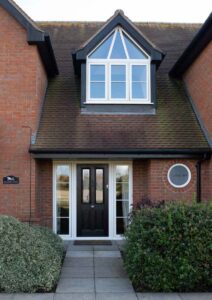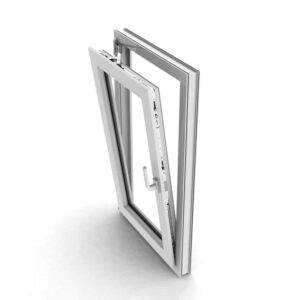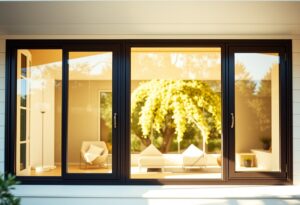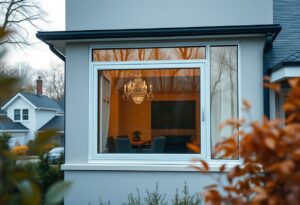Ecologically conscious individuals are constantly seeking innovative ways to minimise their environmental impact, and one often overlooked solution lies in the selection of energy-efficient windows for their homes. Windows play a crucial role in regulating indoor temperature and reducing the need for artificial heating or cooling, which in turn can significantly lower energy consumption and carbon emissions. By understanding the key features and benefits of energy-efficient window choices, homeowners can make informed decisions that not only enhance their living spaces but also contribute to a more sustainable and eco-friendly lifestyle. In this blog post, we will explore the various types of energy-efficient windows available, their potential impact on reducing environmental harm, and the important factors to consider when selecting the most suitable option for your home.
Key Takeaways:
- Choosing energy-efficient windows can significantly reduce your carbon footprint by reducing the amount of energy needed for heating and cooling your home.
- Investing in double or triple-glazed windows with low emissivity coatings can improve insulation and reduce heat loss.
- Proper installation and maintenance of energy-efficient windows is crucial for maximising their effectiveness in reducing energy consumption.
- Consider opting for window treatments such as blinds or curtains to further enhance the energy efficiency of your windows.
- Regularly monitoring your energy usage after installing energy-efficient windows can help you track and appreciate the positive impact on your carbon footprint.
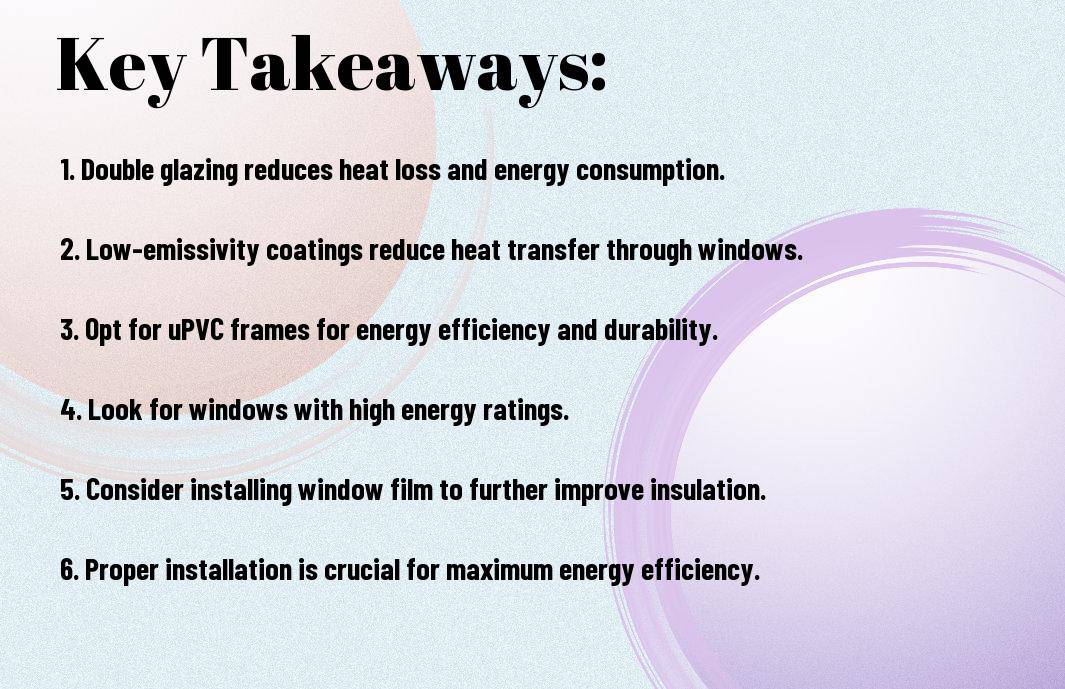
Types of Energy-Efficient Windows
When it comes to reducing your carbon footprint, making the right choice for your windows can have a significant impact. There are several types of energy-efficient windows to consider for your home or building. These include Insulated Glass Units (IGUs), Low-Emissivity (Low-E) Coatings, and Double or Triple Glazing.
Here is a breakdown of each type of energy-efficient window, including their benefits and considerations:
| Insulated Glass Units (IGUs) | Low-Emissivity (Low-E) Coatings |
| Provide enhanced thermal insulation | Reflect infrared light, reducing heat transfer |
| Reduces heat loss in winter and heat gain in summer | Helps to maintain a comfortable indoor temperature |
| Can help to reduce energy costs | Minimises UV light, protecting furniture and fabrics |
| Perceiving a significant reduction in outdoor noise | Can contribute to a quieter and more peaceful indoor environment |
| Consideration must be given to proper installation and maintenance | May have a higher initial cost, but offers long-term energy savings |
Insulated Glass Units (IGUs)
Insulated Glass Units (IGUs) consist of two or more panes of glass separated by a spacer and sealed to create a single unit. The space between the panes is filled with an insulating gas, such as argon or krypton, which helps to improve the window’s thermal performance. This design reduces heat transfer through the window, making it an effective choice for energy efficiency.
Furthermore, IGUs can help to reduce noise from the outdoors, providing a quieter and more peaceful indoor environment. They are a versatile option for both residential and commercial properties, offering benefits for energy efficiency, comfort, and sound insulation.
Low-Emissivity (Low-E) Coatings
Low-Emissivity (Low-E) Coatings are thin, virtually invisible metal or metallic oxide layers deposited on a window surface to reduce the transfer of heat. These coatings are designed to reflect infrared light, helping to minimise heat transfer and maintain a comfortable indoor temperature throughout the year. In addition to improving energy efficiency, Low-E coatings also help to protect furniture and fabrics from UV damage.
Importantly, Low-E coatings can contribute to a significant reduction in energy consumption and associated costs, making them a valuable investment for environmentally conscious homeowners and businesses.

Factors to Consider When Choosing Windows
When considering energy-efficient window choices for your home, there are several important factors to take into account. These include the window materials and their properties, frame design and thermal bridges, and the overall energy performance of the window.
- Energy efficiency
- Window style and orientation
- Budget and cost effectiveness
- Maintenance and durability
Window Materials and Their Properties
When it comes to window materials and their properties, different materials such as uPVC, timber, aluminium and composite have varying levels of insulation and energy efficiency. It’s important to consider factors such as U-value, solar heat gain coefficient (SHGC), and visible transmittance (VT) when choosing the right window material for your home.
Frame Design and Thermal Bridges
The frame design and thermal bridges play a crucial role in the energy efficiency of windows. Opting for multi-chambered frames, low-conductivity spacers, and thermal break technology can significantly reduce heat loss and improve the overall energy performance of your windows.
After carefully considering these factors, you can make an informed decision about the window materials and frame design that will best suit the specific needs of your home and help in reducing your carbon footprint.

Installation and Maintenance of Energy-Efficient Windows
When it comes to reducing your carbon footprint with energy-efficient window choices, the installation and maintenance of these windows play a crucial role. Proper installation and regular maintenance ensure that your energy-efficient windows are performing at their best, providing you with maximum efficiency and long-term benefits.
Proper Installation for Maximum Efficiency
Proper installation is key to ensuring that your energy-efficient windows are fully sealed and insulated. This involves hiring a professional installer who has experience working with energy-efficient windows. They will ensure that the frames are properly fitted and sealed to prevent any air leakage. Additionally, using the correct type of sealant and insulation is essential to maximise the efficiency of your windows.
Maintenance Tips to Sustain Performance
Maintaining the performance of your energy-efficient windows is vital for their longevity and efficiency. Regular cleaning and inspection are necessary to prevent any build-up of dirt or debris that could affect their performance. Weather-stripping and caulking should be checked and replaced as needed to maintain a proper seal. Any cracks or damage should be addressed promptly to prevent any decrease in efficiency.
For optimal performance, it is advisable to schedule professional maintenance checks at least once a year. During these checks, a professional can assess the condition of your energy-efficient windows and make any necessary repairs or adjustments. Any worn-out or damaged components should be replaced to ensure your windows continue to operate at their best.
Beyond Windows: A Holistic Approach to Energy Efficiency
When it comes to reducing your carbon footprint, energy-efficient window choices are just the beginning. To truly maximise the energy efficiency of your home, it’s important to take a holistic approach that considers complementary measures and the future of window technologies and sustainability.
For more information on choosing eco-friendly windows, visit Choosing Eco-Friendly Windows.
Complementary Measures to Enhance Window Performance
While energy-efficient windows play a crucial role in reducing heat loss and gain, there are several complementary measures that can further enhance their performance. These include proper insulation, sealing air leaks, and using window treatments such as blinds and curtains to reduce heat transfer.
The Future of Window Technologies and Sustainability
As technology continues to advance, the future of window technologies holds great promise for sustainability. From smart windows that can adjust their tint based on sunlight exposure to improved glazing materials that enhance energy efficiency, the future of windows is bright.
For more information about the future of window technologies and sustainability, stay tuned as we explore the latest industry developments and innovations.
Reducing Your Carbon Footprint with Energy-Efficient Window Choices
In conclusion, choosing energy-efficient windows is a practical and effective way to reduce your carbon footprint. By investing in high-performance windows, you can significantly decrease the amount of energy needed to heat and cool your home, leading to lower carbon emissions and a more sustainable environment. Energy-efficient windows also offer additional benefits such as improved insulation, noise reduction, and UV protection. With a variety of options available, including double or triple glazing, low-emissivity coatings, and insulated frames, there are numerous ways to make your windows more energy-efficient. By making the switch to energy-efficient windows, you can contribute to a greener future while also enjoying long-term energy cost savings. Be sure to consult with a professional to find the best window solutions for your home. Together, we can make a positive impact on the environment and reduce our carbon footprint for generations to come.
FAQ
Q: How can energy-efficient window choices reduce my carbon footprint?
A: Energy-efficient windows can reduce your carbon footprint by minimizing the need for heating and cooling, leading to lower energy consumption and reduced greenhouse gas emissions.
Q: What are the benefits of choosing energy-efficient windows?
A: Energy-efficient windows can lower your energy bills, improve comfort by reducing drafts and hot spots, and contribute to a healthier environment by reducing greenhouse gas emissions.
Q: How do energy-efficient windows help in conserving energy?
A: Energy-efficient windows are designed to minimize heat transfer, preventing heat from escaping in winter and entering in summer. This reduces the need for constant heating and cooling, thus conserving energy.
Q: What factors should I consider when choosing energy-efficient windows?
A: When choosing energy-efficient windows, consider factors such as the U-value, solar heat gain coefficient, and the window’s framing material to ensure maximum energy efficiency.
Q: Are there any financial incentives for choosing energy-efficient windows?
A: Yes, many governments and organisations offer financial incentives, such as tax credits and rebates, for choosing energy-efficient windows as part of energy-saving initiatives.

